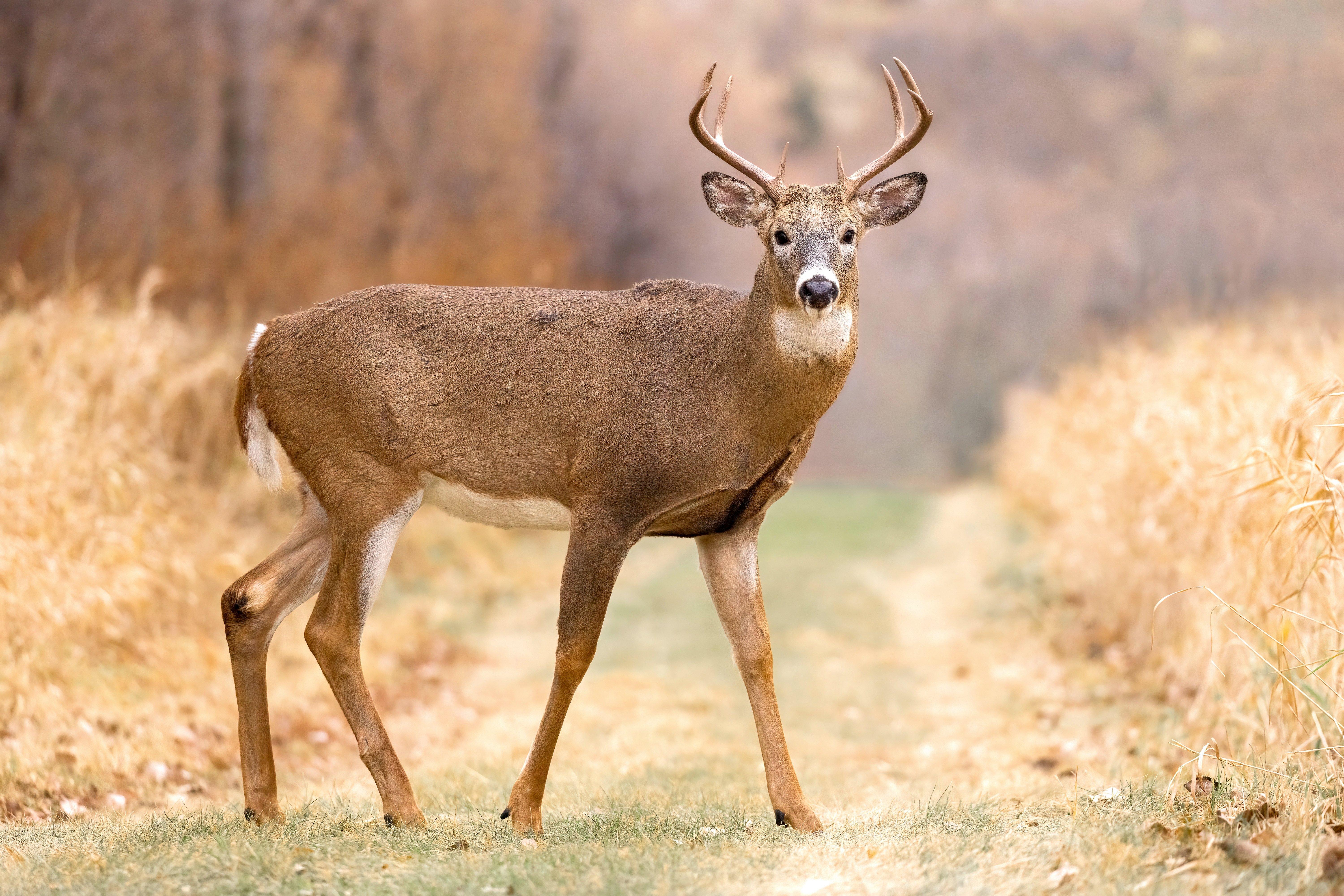The Bluegrass State is now the 32nd CWD-positive state in the country, and the recent case was outside of the 5-county zone already under surveillance. So, what happens next?
On December 7, 2023, the Kentucky Department of Fish and Wildlife Resources announced the first positive case of Chronic Wasting Disease found in Kentucky, making the Bluegrass State the 32nd state to now be CWD-positive. According to KDFWR personnel, the deer was a 2.5-year-old buck taken on November 11, opening morning of the Kentucky rifle season, on private property in Ballard County. The hunter indicated to KDFWR staff that the deer was acting normally and was even chasing a doe before it was shot.
“The sample was collected by KDFWR staff under our routine surveillance sampling efforts. The hunter did not seek us out to have it tested,” KDFWR staff told us. Instead, KDFWR operates CWD testing centers at cooperating processors and taxidermists around the state, and it’s at one of those processors where the infected deer was discovered. After the initial positive result from the field test, known as enzyme-linked immunosorbent assay (ELISA), the sample was sent to the lab for a more extensive and thorough test known as immunohistochemistry (IHC). Both tests confirmed CWD in the deer.

Kentucky’s first CWD-positive case was in a 2.5-year-old buck taken in Ballard County on opening day of modern gun season, 2023. (Image by Travis Potter)
Ballard County is in far western Kentucky, but outside of the nearby five-county surveillance zone that has been under a phase of the KDFWR’s CWD response plan since 2021. That portion of the CWD response plan was implemented due to a positive case that was detected in neighboring Henry County, Tennessee. The validity of that Tennessee case has been under intense scrutiny recently because of a whistleblower lawsuit filed against the Tennessee Wildlife Resources Agency by its former head deer biologist.
Hunters in Ballard County have been exempt from the regulations in the surveillance zone, which included mandatory testing and bans on baiting and minerals. But KDFWR staff told us that they’ve nonetheless been steadily increasing their sampling efforts in Ballard County, and indeed, all of Kentucky’s border counties. Six of the seven states bordering Kentucky are CWD-positive. “CWD has been detected in Missouri approximately 60 miles away from Ballard County,” KDFWR staff said.
For many Kentucky hunters, the news wasn’t unexpected, with tens of thousands of deer and elk having been tested across the state over the past several years. Now, hunters all over the state, and especially in western Kentucky, are asking, “What happens next?”
The KDFWR’s CWD response plan has been in place, with modifications, for more than 20 years. For the first initial positive case, the plan calls for the creation of a testing zone, which in this case will include Ballard and surrounding counties, and the creation of a CWD Response Team to manage it. Regulations immediately impacting hunters will likely include prohibitions on using bait and minerals (which is currently legal in Kentucky outside of the five-county surveillance zone), mandatory testing of harvested deer from the zone, and bans on moving deer parts besides boned venison or cleaned skulls outside of the zone.
Depending on the frequency of CWD detection, subsequent measures outlined in the plan could include (verbiage pulled directly from the plan):
Targeted population reduction designed to eliminate potentially infected animals in known infected areas; when recent introduction is suspected. The method of sampling will be dependent on the time of discovery in relation to the hunting season, but may include a combination of hunter-harvest, landowner authorizations, and agency-directed culling.
If CWD is detected during hunting season, hunter harvested surveillance will be used as the primary method of determining distribution and prevalence of CWD. Hunting opportunities will be liberalized by expanding seasons and increasing available licenses in the MZ. Landowners will be provided with additional opportunities to take antlered or antlerless deer during the hunting season.
If hunters do not kill a sufficient number of cervids to provide an adequate sample size or if CWD is detected outside of the hunting season, KDFWR will consider designating special hunts, landowner shooting permits, agency-directed culling and/or other methods as deemed necessary. Agency staff will work cooperatively with landowners to direct targeted culling efforts area by authorizing landowners to take deer on their properties and agency staff will participate in targeted culling.
In the event of a confirmed case that is believed to have been a recent introduction, where disease management efforts aimed at preventing establishment of disease in the population may be effective, targeted population reduction within a small specific area within the MZ, in proximity to the area where CWD positive deer have been discovered will be initiated.
Full details of the response plan can be found at FW.KY.GOV.
Dr. Robin Floyd, First District Commissioner for KDFWR, represents Ballard County as part of his district. “This is an important situation, but I feel it is critical that we don’t overreact. First, we need to complete the testing we did during the state’s recent firearm season to see if it is more widespread or just an isolated case. The deer hunters in my district have common sense and I think it is important that we take their input into consideration before proceeding. I will be attending a meeting at one of the largest sportsman’s clubs in my district next week and I feel like there will be a large turnout. I’m anxious to hear their opinions.
“I want people to know the KDFWR will be modeling their response on other state departments who have experienced this. Both the good and the not-so-good results,” Floyd continued. “We want to learn from their successes and avoid their mistakes as we move forward. I don’t believe in killing deer for the sake of saving deer. I know there were already areas of this district that were above carrying capacity on deer and we already had a plan in place to help reduce those populations. I have a strong preference for continuing that plan and allowing licensed hunters in the district to harvest those deer, either for their own use or for donation to Hunters for the Hungry, to help feed people in need this winter.
“I expect an emergency Commission meeting to be called soon, likely next week, where we will discuss the response plan. I don’t want to see any more regulations on state hunters than what is absolutely necessary to help control the spread of CWD,” Floyd said.
Chronic Wasting Disease is a transmissible spongiform encephalopathy (TSE) that affects all cervid species. Prion proteins in infected animals fold and eventually damage the brain to a point of mortality. CWD is spread through direct contact with infected animals and through contact with these prions in the soil, water, and surrounding environment. The disease is similar to bovine spongiform encephalopathy (Mad Cow) in cattle and scrapie, which affects sheep and goats. Like all TSEs, CWD is uniformly fatal. It was first discovered in a captive mule deer herd in Colorado in 1967.
Symptoms of CWD-infected deer include disorientation, weight loss and excess salivating, all near the end stage of the disease. While the disease is 100 percent fatal for infected deer, the incubation period is long, averaging between 18 and 24 months. When infected deer are inside the incubation period, they may exhibit little or no symptoms, appearing healthy, but still spreading the prions and infecting surrounding deer.
While there has never been a documented case of CWD spreading from deer to human, it is similar to Creutzfeldt-Jakob disease, which is fatal in humans. Because of this, the CDC recommends all hunters in CWD positive areas have their deer tested before consuming their venison, and advises against consuming venison from animals that test positive.
Report sick or dead deer seen in Kentucky by completing this survey.












